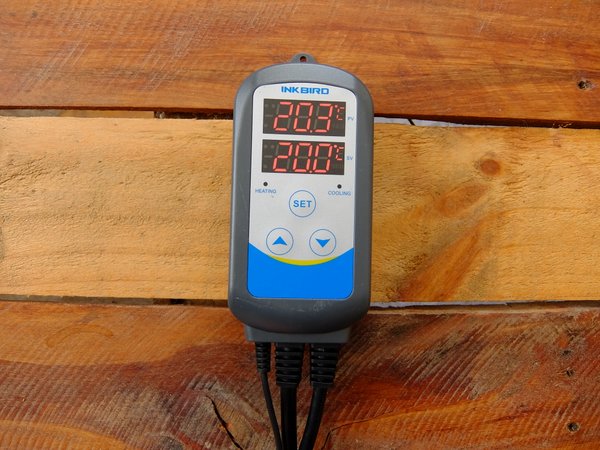Cold Crashing Your Home Brew
There are always ways to refine your brewing process, clarity is one of those things that isn’t always really necessary but it would be nice to achieve the pin-sharp clarity of commercial beers. Cold crashing beer is a technique that more and more brewers are doing with the primary benefit of achieving a crystal clear beer.
Reducing the temperature and cold crashing beer in the fermenter has become a mandatory step in many brewers processes, however, it isn’t strictly necessary for most batches of homebrew. What is the point then of going to the trouble and what does this step do the beer. In this article, we will cover how and why you may want to cold crash your beer.
Table of Contents
Why Cold Crash Your Home Brew?
The main purpose of cold crashing your beer is to encourage the flocculation of yeast and other particles that may be in suspension and therefore clear the beer. Quick cooling and occasionally the addition of finings during the cold crash can leave you with a finished beer that is crystal clear.
The quick cooling of a beer or other brews like wine or mead encourages yeast to flocculate or group together and other particles like protein to coagulate. When the particles group together the collected mass helps to bring them down to the bottom of the vessel and out of suspension.
This process of removing the particles from the beer is what gives the finished beer a level of clarity that to the naked eye is just the same as a commercial beer and this happens without filtration.
What About Flavour Benefits?
In most cases, it is doubtful that you will be able to tell the difference between a cold crashed beer and a non-cold crashed beer. Even after cold crashing, there are still particles suspended in the beer, including yeast. This experiment on cold crashing failed to identify much difference between two beers that were identical, except for the fact one was cold crashed.
Working as a commercial brewer I cold crash every batch of beer. The primary reason for doing so is to get as much of the particles in suspension to sediment. This speeds up the process and means packaging can take place a lot sooner. As a home brewer I rarely cold crash beers and I have seen no difference other than the beers taking longer to clear.
One benefit you may find with cold crashing is that because more of the particulate is removed from the beer before packaging that the flavours in the beer are stable or more consistent for a longer period of time. This is an assumption rather than evidence based statement though.
How To Cold Crash Your Beer?
You are going to need a chamber that you can place the fermenter in to cool it down so cold crashing a beer is not going to be possible unless you have something like a fermentation fridge. If you do temperature controlled fermentations then this will not be a problem, if not then you will have to forego the cold crash.
When To Start A Cold Crash?
When you should cold crash a beer or any other home brew for that matter is important.
We need to make sure that the fermentation is finished, to begin with. If fermentation is not complete the yeast will stop fermenting as soon as the temperature falls below a certain point. There will be residual sugars left in the beer and it is not going to taste as it should.
Along with this, there are compounds created during fermentation that will impart undesirable flavours, Dimethyl Sulfide (DMS), a sulphur based compound is created during fermentation and the yeast will ordinarily clean up these unwanted compounds once fermentation dies down. If you cold crash too soon, some flavour compounds such as these can remain in the beer. Fortunately, it only takes 2 – 3 days after fermentation activity stops for the yeast to clean up these off flavours.
First of all, check your fermentation is finished with a hydrometer. Check over consecutive days to ensure no movement and then wait for 2 – 3 days at a minimum before cold crashing. This simple rule should be enough to ensure fermentation is finished and the byproducts of fermentation are removed.
Cold Crash Temperature Range
As mentioned earlier a temperature controlled fridge or freezer, using a simple thermostat controller like an inkbird is one of the easiest ways to maintain these temperatures. You do not want to freeze the beer but getting the temperature down to this range rapidly is the most effective way to get the best clarity of your beer.
Beware Airlock Vacuum
One of the issues many brewers will encounter when they cold crash a beer is that the temperature drop will cause a vacuum to form in the sealed fermenter.
What happens is that the air in the headspace in the fermenter contracts as the temperature drops. This creates a vacuum and air is sucked in through the airlock. This is not a big problem but causes some people to panic that air of liquid from the airlock is being pulled into the beer.
If this is a concern, the easiest thing to do is to remove the airlock and replace it with a small bung. The vacuum will still happen but it is not going to be strong enough to damage the fermenter. Many people fill their airlocks with vodka so that if any liquid is pulled through into the beer it is sanitary.
Should You Bother Cold Crashing Your Beer?
In my opinion, this is completely personal preference. The impact on the flavour is negligible at best, it is more a case of the way the beer looks and the process.
Many brewers incorporate a cold crash into their process because they have a fermentation fridge or chamber set up to control the temperature of the main fermentation. Performing a cold crash after that is not a problem, you just have to change the temperature controller.
I do not perform a cold crash on most of my beers and do not have any problems with clarity so I don’t feel it is a necessary step, but that is not to say it is beneficial to the look of your home brewed beers.






I have just read your article about cold crashing do i do this when i transfer to the barrel any info would be useful.
Regards
Paul
The ideal time to cold crash is once fermentation is finished and the byproducts of fermentation have been cleared up by the yeast. For ales this is usually a few days after reaching final gravity. Hope this helps